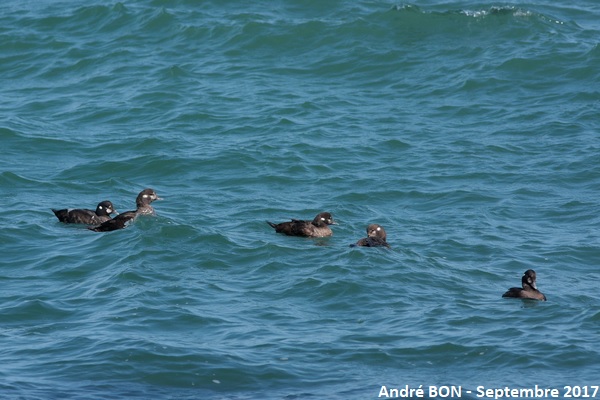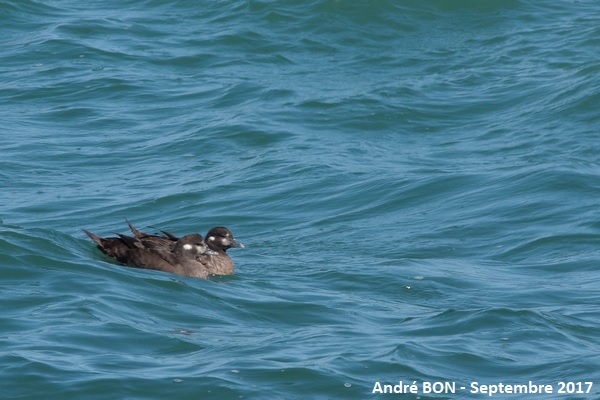

| Harlequin Duck (Histrionicus histrionicus (Linnaeus, 1758)) |


|
|
Scientific name: Histrionicus histrionicus (Linnaeus, 1758) Common name: Harlequin Duck French name: Arlequin plongeur, Canard arlequin, Garrot arlequin. Order: Anseriformes Family: Anatidae Size: Body size: 38 to 51 cm; Weight: 500 to 725 g; Wingspan: 56 to 66 cm. Habitat: Banks of torrents and other very fast flowing waterways, rocky coasts and reefs where the sea is very rough. Food: Larvae of aquatic insects, molluscs, crustaceans, sea worms and small fishes caught while diving. Nesting: The nests are located on the ground or in a tree cavity, often well concealed under bushes. They are placed less than 5 meters from the water. There is usually a clutch of 3-7 eggs. Migration: Moves from the coasts to inland in spring and back in autumn to winter by the sea. Geographic area: Atlantic coasts of northern Canada, Greenland and Iceland, western North America from Alaska to California, northeast Asia. |
The Harlequin Duck shows a strong sexual dimorphism. The male has a very dark blue grey plumage. The flanks are brown. There are white spots and stripes on the head, neck and chest. The female is a uniform dark brown colour with a whitish breast. Each side of the head has two small, indistinct white spots in front of the eye and a more conspicuous one behind. Males in winter plumage resemble females but lack whitish breast. Females, juveniles and males in winter plumage can be confused with female Buffleheads (Bucephala albeola) and female Surf Scoters (Melanitta perspicillata) females or in winter plumage. The female Bufflehead has only one spot on its head while the Harlequin Duck has two or three. The Surf Scoter has a different head profile, triangular with a very thick bill at the base. |
| [To know more about the Harlequin Duck] [Next picture] [Top] |

|
Several white spots on the side of the head and a profile of the head with a rather thin base of the bill, these are therefore Harlequin Ducks swimming near the rocky coast of the "Bout du monde". |
| [To know more about the Harlequin Duck] [Previous picture] [Top] |

|
I hope one day to see a beautiful male in breeding plumage. I will have to come back earlier in the season and maybe try my luck further inland. |